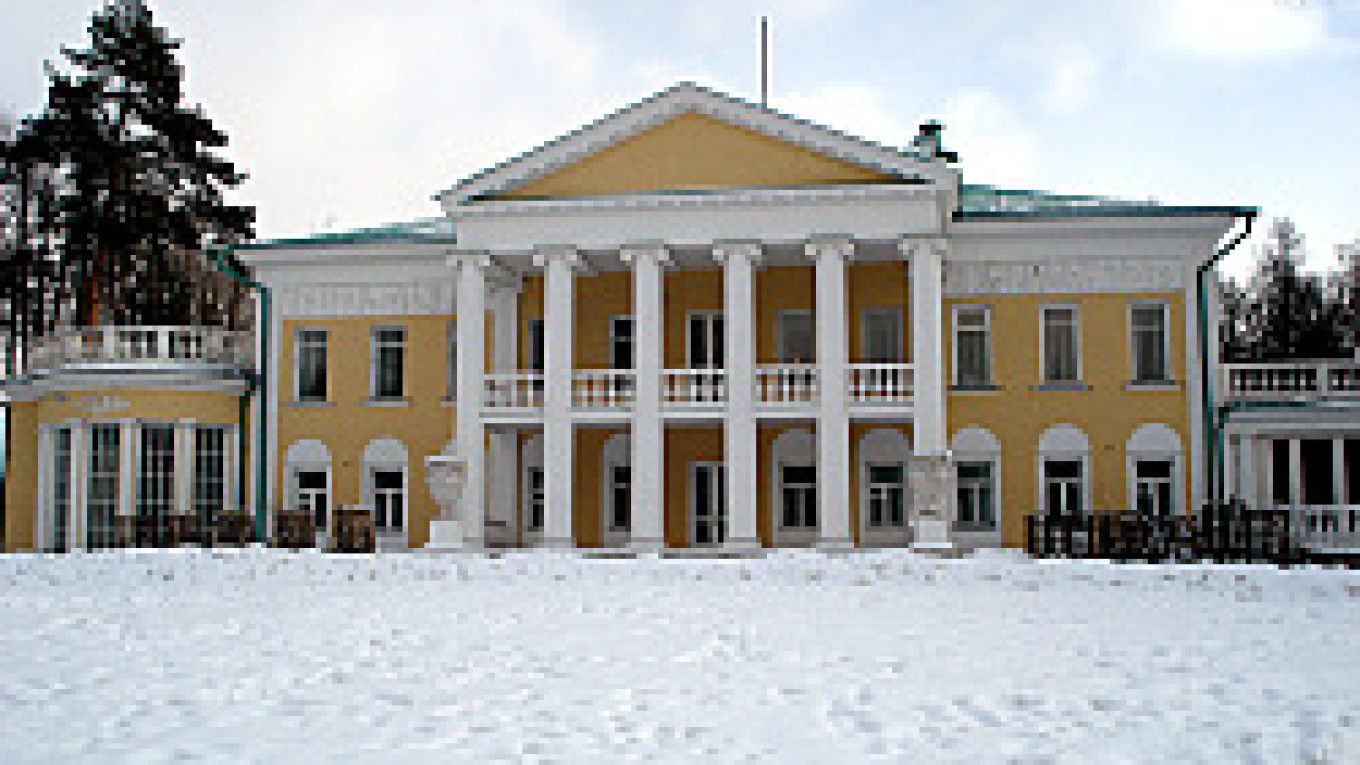The cult that developed around Lenin in the Soviet period is very difficult for Westerners to comprehend fully. We have our respected leaders, our Churchills and our JFKs, but none of them has entered into myth in the same way as Lenin.
Streets, libraries, factories, the Moscow metro -- it seems everything in Russia has been named after Lenin at some point. The Gorki Leninskiye State Historical Museum-Preserve was also named after the revered leader, but there is a difference -- it is actually directly connected with him.
The Gorki estate in the southeast of Moscow was owned by the noble Spasitelev family for almost three centuries. The first stone building on the estate was completed by the end of the 18th century. During the 1800s, the estate changed hands many times, but toward the end of the century, it began to fall into disrepair.
It was in the 1910s that Zinaida Morozova, the widow both of the successful entrepreneur Savva Morozov and General Anatoly Reinbot, the governor general of Moscow from whom she inherited the estate, undertook a large-scale renovation of the mansion. It was remodeled in the neoclassical style by the architect Fyodor Schechtel and retains the same facade today.
The estate was nationalized in 1918, and Lenin recuperated there after Fanya Kaplan's attempt on his life in August of that year.
As Lenin's health declined, he spent more and more time at Gorki, living there permanently from May 1923 until his death on Jan. 21 1924, after which the estate was renamed Gorki Leninskiye.
 James Marson / MT A statue of Lenin sits imposingly on the grounds of the Gorki Museum-Mansion. | |
There are now a number of museums located at the site, perhaps the most interesting of which is Lenin's Kremlin Office and Apartment Museum. The display was originally located in the Senate building in the Kremlin but was moved here in 1994 after that building became the president's residence.
The rooms are laid out as they were when Lenin occupied them and are full of a variety of genuine artifacts -- his desk, his bed, an eclectic collection of presents and his huge library of books. The clock in his office shows 8:15 p.m., the? time on Dec. 12, 1922, when he last? left the office, complaining of feeling ill.
The Gorki Museum-Mansion, located in the main building, contains a number of objects related to Lenin's time at Gorki Leninskiye, including a number of wheelchairs he used as his health deteriorated, his death mask and banners from his funeral. In the garage, you can see Lenin's Rolls-Royce Silver Ghost, specially adapted for Russian weather conditions with skis on the front wheels and tracks on the back.
The two museums are devoted entirely to how Lenin lived; his politics are left untouched and no link is drawn between his life and work. The objects he surrounded himself with are presumed to be of interest simply because of their connection with the Bolshevik leader. In this sense, the museums can be considered a relic of the personality cult that developed after his death -- uncritical, reverent, obsequious, but fascinating.
 James Marson / MT Lenin's office is preserved exactly as it was on the day he left it for the last time. | |
What to See
In addition to Lenin's Kremlin Office and Apartment Museum and the Gorki Museum-Mansion, there are two other museums:
The Museum of V.I. Lenin, built in 1987, contains photocopies of Lenin's writings, government documents and photographs, and his wife Nadezhda Krupskaya's transcription of his Last Testament. It takes a much drier, more official look at Lenin than the other museums.
The Museum of Peasant Life was created in 1982 and gives a romanticized insight into peasant life and work in villages around the turn of the 20th century. The exhibits, laid out in a traditional wooden peasant hut, include clothes, shoes, furniture and farming tools.
How to Get There
From metro station Domodedovskaya, take bus 439 to the "Baza" stop. Walk away from the road through the housing blocks and you will see the main yellow building.
Contacts
The Gorki Leninskiye State Historical Museum-Preserve Moscow region, Leninsky district, 548-9309, www.gorki-len.narod.ru. Open daily 10 a.m.-5 p.m. Entrance to each museum is 100 rubles.
A Message from The Moscow Times:
Dear readers,
We are facing unprecedented challenges. Russia's Prosecutor General's Office has designated The Moscow Times as an "undesirable" organization, criminalizing our work and putting our staff at risk of prosecution. This follows our earlier unjust labeling as a "foreign agent."
These actions are direct attempts to silence independent journalism in Russia. The authorities claim our work "discredits the decisions of the Russian leadership." We see things differently: we strive to provide accurate, unbiased reporting on Russia.
We, the journalists of The Moscow Times, refuse to be silenced. But to continue our work, we need your help.
Your support, no matter how small, makes a world of difference. If you can, please support us monthly starting from just $2. It's quick to set up, and every contribution makes a significant impact.
By supporting The Moscow Times, you're defending open, independent journalism in the face of repression. Thank you for standing with us.
Remind me later.


